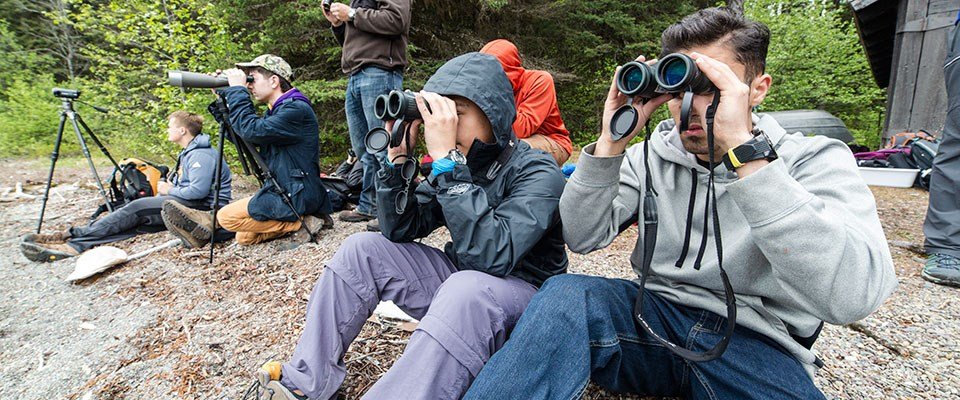Discover beautiful places all around you at TouristLookup

Ecotourism Wildlife Watching: A Guide to Responsible Adventures
Are you someone who feels a thrill at the mere thought of encountering wildlife in its natural habitat? Do you yearn for that heart-pounding moment when you spot a majestic creature in the wild, untouched by the constraints of captivity? If so, then you’re likely drawn to the world of ecotourism wildlife watching. But before you set out on your next adventure, it’s crucial to understand the importance of responsible wildlife watching.
Why Responsible Ecotourism Wildlife Watching Matters

Imagine this: you’re deep in the heart of a lush forest, surrounded by the symphony of nature. Suddenly, you catch a glimpse of movement—a rare and beautiful animal emerges from the foliage. Your instinct might be to whip out your camera and snap away, but pause for a moment. Your actions in that instant could have a profound impact on the creature’s well-being.
Preserving Natural Habitats

One of the primary reasons for practicing responsible wildlife watching is to protect and preserve natural habitats. Many species thrive in specific environments, and disturbances caused by human activities can disrupt their delicate ecosystems. By observing from a distance and minimizing our footprint, we can help ensure that these habitats remain intact for future generations of both wildlife and humans to enjoy.
Minimizing Stress on Wildlife

Wild animals are not accustomed to constant human presence, and our sudden intrusion into their space can cause them stress and anxiety. Imagine if someone barged into your home uninvited and started taking photos of you—how would you feel? The same principle applies to wildlife. Responsible wildlife watching involves maintaining a respectful distance and avoiding behaviors that could alarm or distress the animals.
Promoting Conservation Efforts

Engaging in responsible wildlife watching also supports conservation efforts around the world. Many ecotourism operators and organizations channel a portion of their profits into conservation initiatives aimed at protecting endangered species and their habitats. By participating in these tours and adhering to ethical guidelines, you contribute directly to the preservation of wildlife and their ecosystems.
Guidelines for Responsible Wildlife Watching

Now that we understand why responsible wildlife watching is essential, let’s explore some practical guidelines to ensure that your next adventure leaves a positive impact on the natural world.
Research Your Destination

Before embarking on a wildlife-watching expedition, take the time to research your destination thoroughly. Familiarize yourself with the local flora and fauna, as well as any regulations or guidelines governing wildlife interaction in the area. This knowledge will not only enhance your experience but also empower you to make informed decisions that prioritize the well-being of the wildlife.
Choose Ethical Tour Operators

When selecting a tour operator for your wildlife-watching adventure, opt for those that prioritize ethical and sustainable practices. Look for operators who adhere to responsible tourism guidelines, minimize their environmental impact, and support local conservation efforts. By choosing ethical tour operators, you can ensure that your visit contributes positively to wildlife conservation.
Respect Wildlife Boundaries

Responsible wildlife watching involves respecting the boundaries of the animals you encounter. Maintain a safe distance and avoid approaching or disturbing them unnecessarily. Remember that you are a guest in their home, and it’s essential to minimize your impact on their natural behavior. Resist the urge to feed, touch, or attempt to interact with the wildlife, as these actions can be harmful and disruptive.
Practice Leave-No-Trace Principles

Whether you’re hiking through the wilderness or enjoying a safari drive, always adhere to Leave-No-Trace principles. Pack out all of your trash, avoid littering, and minimize noise pollution that could disturb wildlife. Leave the natural environment exactly as you found it, ensuring that future generations can enjoy its beauty and biodiversity.
Educate Others
As an advocate for responsible wildlife watching, don’t hesitate to educate others about the importance of ethical tourism practices. Share your experiences, tips, and insights with friends, family, and fellow travelers, encouraging them to adopt responsible behaviors when interacting with wildlife. By spreading awareness, you can help create a culture of respect and stewardship toward the natural world.
Top Destinations for Ecotourism Wildlife Watching

Now that you’re equipped with the knowledge and guidelines for responsible wildlife watching, it’s time to embark on your next adventure. Here are some top destinations around the world where you can experience the thrill of observing wildlife in its natural habitat:
- Galápagos Islands, Ecuador: Explore the unique ecosystems of the Galápagos Islands, home to an incredible array of wildlife, including giant tortoises, marine iguanas, and blue-footed boobies.
- Maasai Mara National Reserve, Kenya: Witness the iconic Great Migration and encounter Africa’s Big Five—lions, elephants, rhinos, leopards, and buffaloes—in the vast plains of the Maasai Mara.
- Tortuguero National Park, Costa Rica: Navigate through the maze of canals in Tortuguero National Park to observe nesting sea turtles, colorful birds, and elusive jaguars in their natural habitat.
- Svalbard, Norway: Embark on a polar expedition to Svalbard, where you can spot polar bears, walruses, and Arctic foxes against the stunning backdrop of icy fjords and snow-capped mountains.
- Ranthambore National Park, India: Experience the thrill of tiger sightings amidst the ancient ruins and dense jungles of Ranthambore National Park, a haven for wildlife enthusiasts.
Responsible wildlife watching is not just about capturing Instagram-worthy moments; it’s about fostering a deep respect and appreciation for the natural world. By following ethical guidelines, choosing sustainable tour operators, and promoting conservation efforts, we can ensure that future generations will have the opportunity to marvel at the beauty and wonder of wildlife in its natural habitat. So, as you embark on your next ecotourism adventure, remember to tread lightly, observe respectfully, and leave a positive legacy for generations to come.



